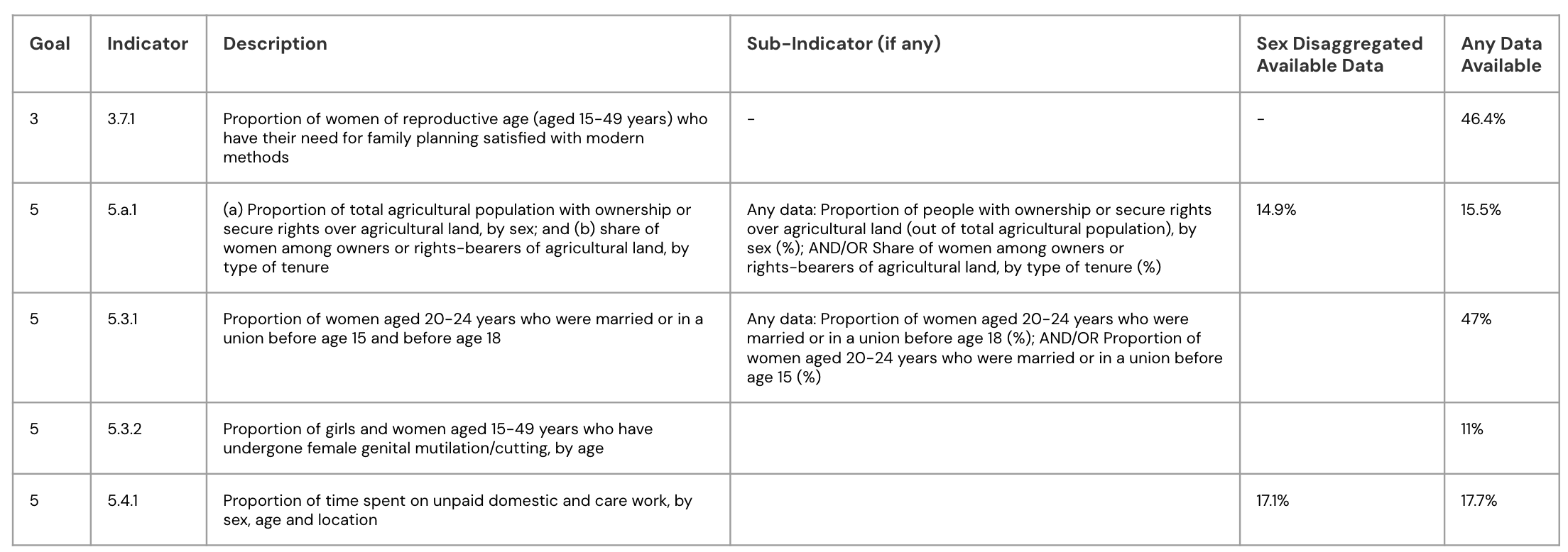Issues with Gender Data
As the numbers below show, there are two main issues with gender data: one is that we need more data; the data we have is scarce. The other issue is that our data does not paint an accurate picture of what’s really going on. If we think of data as movies, not still images, we have a lot of scenes missing.
Data Insights
+132 years
to close the gender gap in education, health, politics, and the economy. (World Economic Forum)
52%
of missing data to monitor the SDG 5 progress. (UN Women Report)
+22 years
to close the gender data gap. (UN Women)
Less than 10%
of women are more likely to have access to the Internet than men. (International Telecommunication Union )
Resource
The Library of Missing Datasets
The Library of Missing Datasets is a physical repository of those things that have been excluded in a society where so much is collected.
“Missing data sets” are the blank spots that exist in spaces that are otherwise data-saturated. Wherever large amounts of data are collected, there are often empty spaces where no data live. The word “missing” is inherently normative. It implies both a lack and an ought: something does not exist, but it should.
We often cannot understand the differential impact of certain phenomena by gender and their consequences in people’s lives due to the lack of quality data available. There are a lot of questions regarding differences between sex and gender that we cannot answer.
For example, are cis women more likely to suffer specific side effects from medication than men?
We usually do not have sufficient detailed data to provide these answers, or there is no data at all.
Gender Data and the Sustainable Development Goals
In a recent working paper, “Missing SDG Gender Indicators,” the World Bank examines coverage of gender data in the monitoring framework and finds that only a third of gender-related SDG data are available. You can explore more of the missing data here. In this table, we can see the SDG goals, the specific indicators, and their descriptions. We can also see if there is sex-disaggregated data on a particular indicator and then if there is any available data, even though it is not sex-disaggregated.
Data Insights

So, why is gender data crucial to changing lives for women and LGBTIQ+ people? Because it provides us with information about differences between groups and allows leaders to create new policies to close gaps.
We need unbiased data to design policies and monitor progress in people’s lives. But, right now, the data picture is imbalanced. We only have a partial snapshot of the lives of women and girls and the constraints they face because there are gaps in gender data worldwide. (Data2X, 2023)
Resource
The Importance of Intersectionality in Data
Sex, age, and disability disaggregated data (SADDD) measure social and economic differences between women and men. These data are important because they help assess if an initiative is successful at targeting and benefiting women, men, girls, and boys and unpack the differentiated impacts of disasters. Collecting SADDD is a prerequisite for gender analysis.
It is vital to consider co-creating and using gender data with women and LGBTIQ+ organizations and civil society groups because the goal should be to create the data that this group needs on their terms. Sometimes, government areas or data organizations produce “gender data” far away from these communities’ needs.